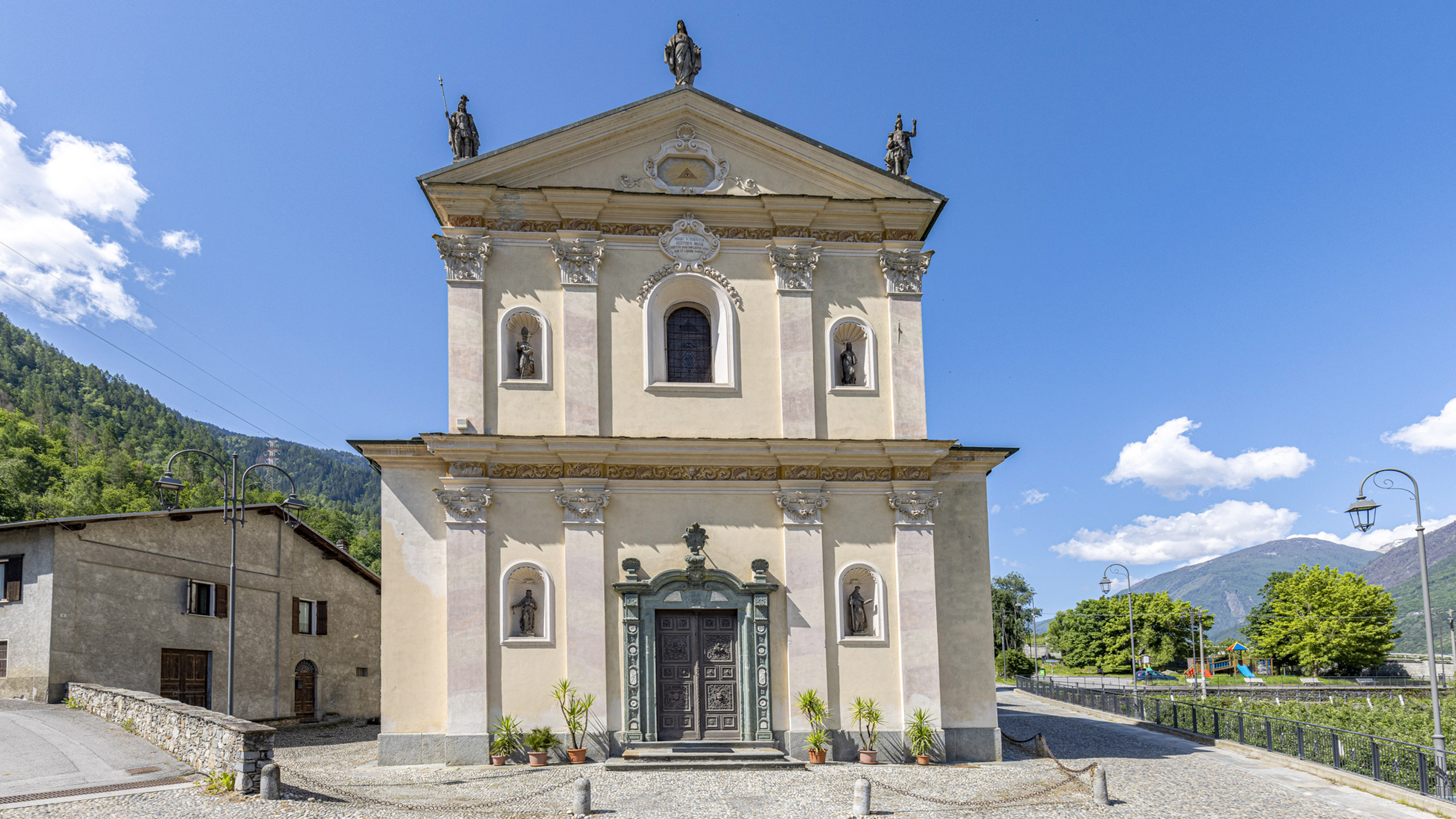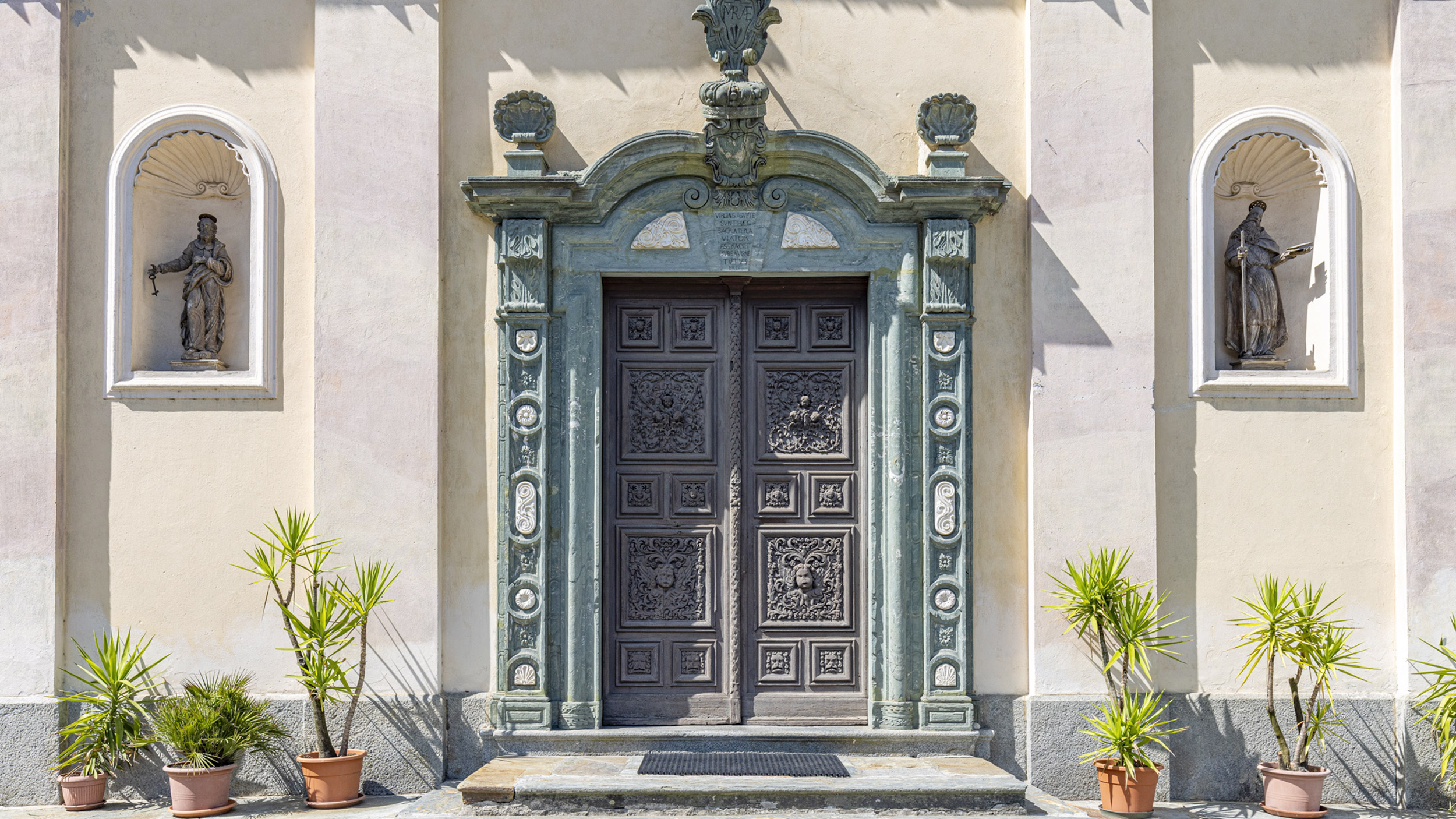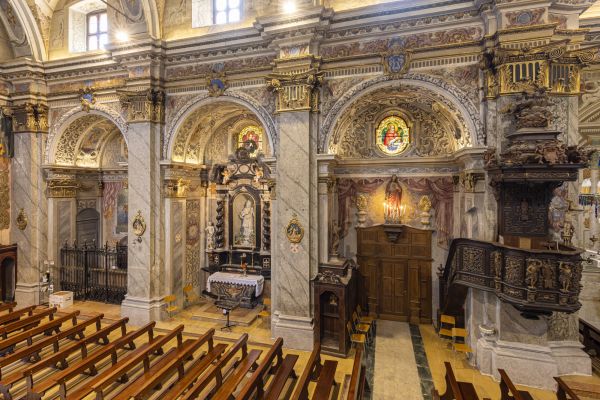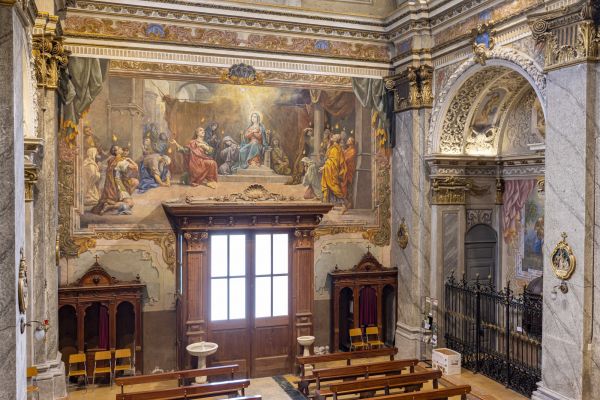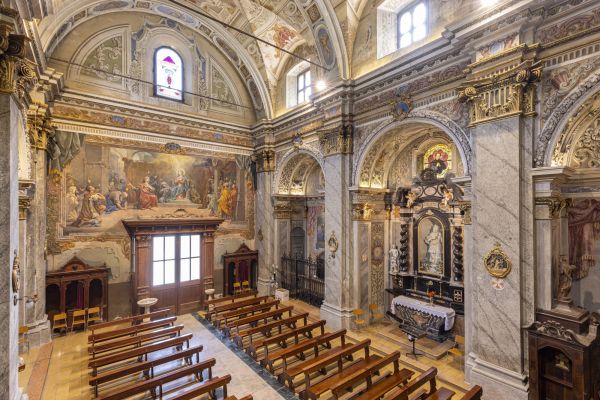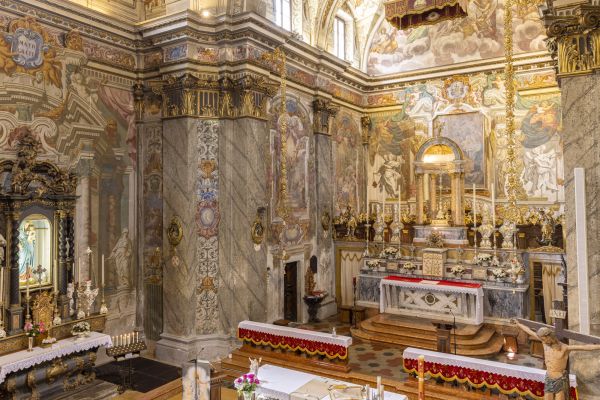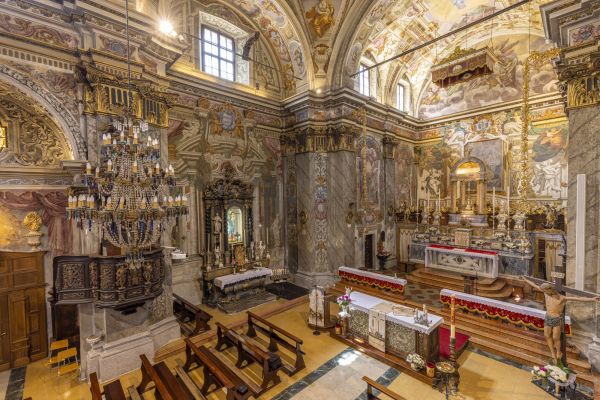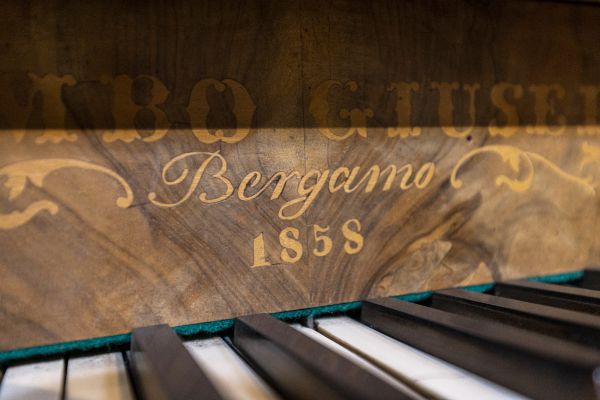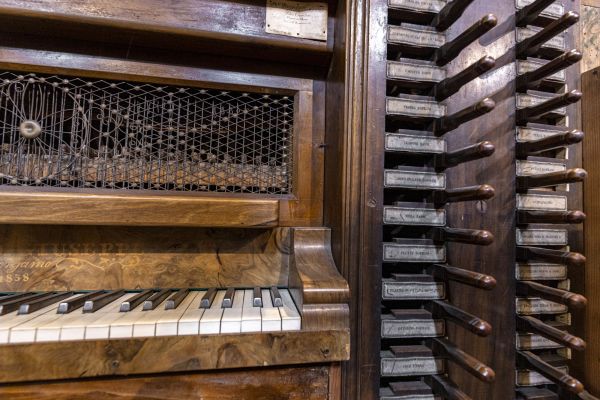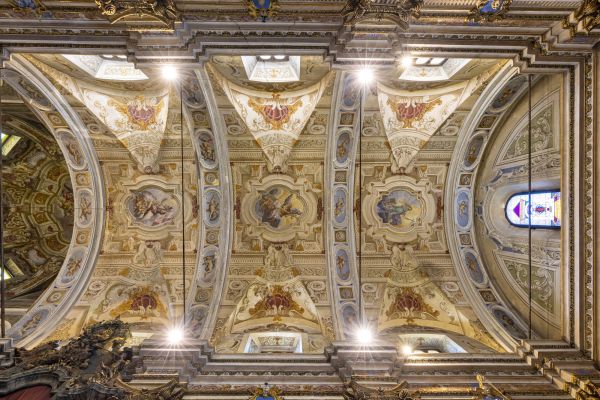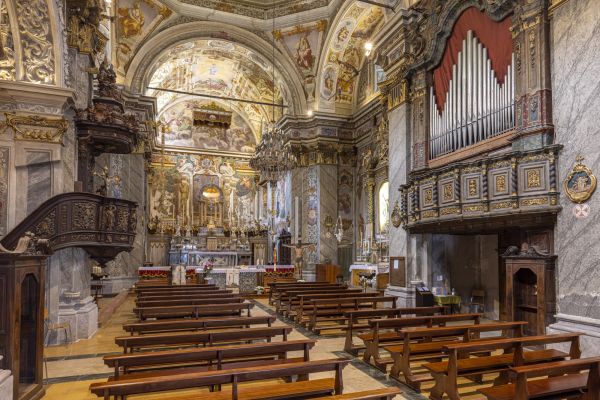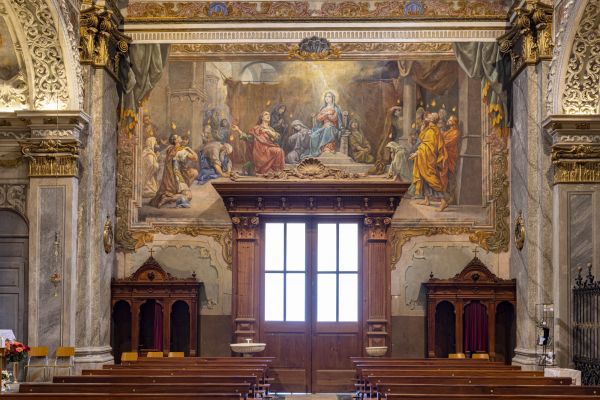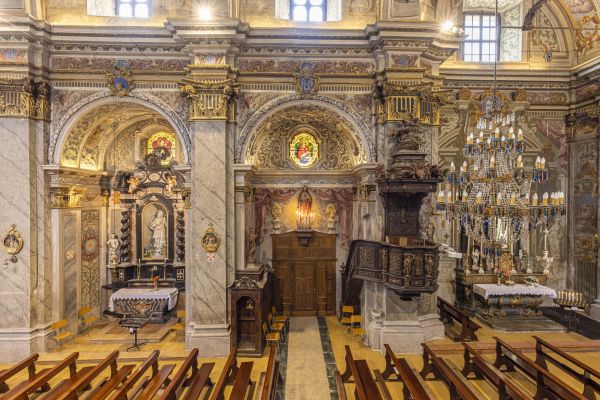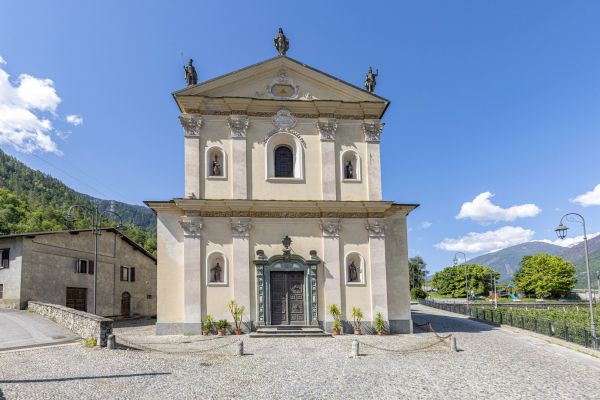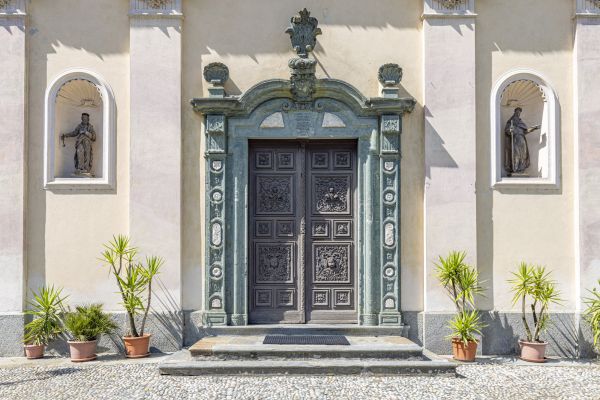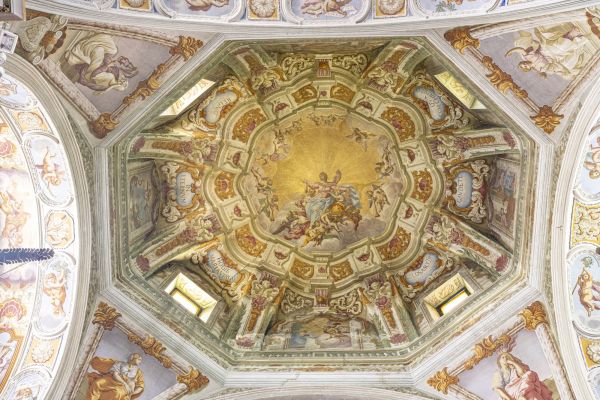Via Fellini 23030 Lovero (SO)
From the stands of chestnut above the town, the church of Sant’Alessandro continues its vigil over the inhabitants of Lovero; its distinctive profile now represents the entire area.
Formally, it maintained its parochial dignity until 1825, but during the 17th century the religious functions were transferred to the church of Santa Maria delle Grazie e dell’Assunta, built ex novo starting in 1596 in a highly visible position close to the residences.
The ”new” parish church is a typical 17th-century model. An additional roof truss was added in the late 19th century to extend the nave and the façade was rebuilt to replicate its predecessor. The octagonal lantern tower, exceeded in height only by the bell tower, indicates the existence of a cupola at the intersection of the nave and the transept.
There are four chapels along each side of the nave, visually joined to the presbytery by a massive continuous cornice. The unitary nature of the space is enhanced by the harmonious frescoed ceiling vault, executed over a relatively long period of time (1710-c. 1740) by Giovan Battista Muttoni, a Jesuit painter from Piedmont who had settled in Lovero after leaving the order.
Between the 17th and 18th centuries, many artists were summoned to embellish this church. One of them was Giovan Battista Del Piaz, creator of the impressive pulpit (1715-1722), unfortunately devastated by the theft of almost all its sculptures and bas-reliefs, which were later replaced with faithful copies.
Others worthy of mention include the Valtellina woodworker Andrea Rinaldi and the Tyrolese woodcarver Mattias Peder. This acclaimed duo crafted the organ case (1768-71), which features faux marble elements and is crowned with a decorative element representing Our Lady of the Assumption with putti and musical angels.
The choir stalls (1765-66) are attributed to the same master woodworkers. Here baroque exuberance gives way to an aesthetic based on geometrical intarsia, which was Rinaldi’s specialty, while Peder crafted the statues and the ornate profiles above the seats.
The most curious element is the wooden statue of Our Lady of Graces (1627), originally attired in actual clothing and worshipped on the former main altar. Both the altar and her rich wardrobe have now been lost, as has her wig. All that remains is the mannequin, initially moved into the Marian chapel on the left side of the nave and finally removed in the mid-1900s by episcopal order.


